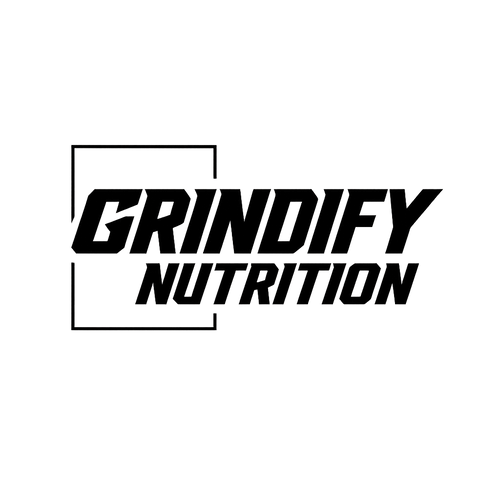Whey Isolate vs Whey Concentrate: Which One’s Better for You?
TL;DR (5 quick facts)
- Protein density: Isolate is ≥90% protein by weight; concentrate ranges ~34–80%. (thinkusadairy.org)
- Lactose & fat: Isolate has very low lactose (typically ~0.5–1%) and fat; concentrate has more of both. (thinkusadairy.org)
- Results: When total daily protein is matched, muscle/strength gains are similar; isolate mainly helps with macros and tolerance. (PubMed)
- Timing: Pre vs. post? Not critical. Hit 20–40 g high quality protein per meal and distribute across the day. (PubMed)
- Who should choose what: Isolate = low lactose, cutting, or sensitive stomachs. Concentrate = budget friendly, micronutrient richer. (thinkusadairy.org)
Why this comparison matters
“Whey isolate vs whey concentrate” is one of the most searched protein questions because it affects digestive comfort, macros, and budget. Choosing the right type can make it easier to hit your protein target without unwanted carbs/fats or unnecessary spend.
What whey actually is (and why it’s high quality)
Whey is the fast digesting protein fraction of milk. It’s a complete protein supplying all nine essential amino acids with a strong quality score, which is why it’s so effective around training. (fil-idf.org)
The core differences at a glance
| Feature | Whey Isolate (WPI) | Whey Concentrate (WPC) |
|---|---|---|
| Protein % (dry basis) | ≥90% | ~34–80% |
| Typical lactose | ~0.5–1% (very low) | Higher than isolate |
| Fat/Minerals | Lower | Higher (retains more) |
| Taste/Mouthfeel | Cleaner, lighter | Creamier, “milky” |
| Cost | Higher | Lower |
| Best for | Low lactose needs, cutting, precise macros | Budget, bulking with more flexibility |
Sources for specifications: U.S. Dairy Export Council; USDA/AMS. (thinkusadairy.org)
Why isolate is “leaner”: It’s filtered further (e.g., membrane filtration or ion exchange) to remove more non protein material. That’s what pushes the protein fraction to ≥90% and drives down lactose and fat. (thinkusadairy.org)
Will isolate build more muscle than concentrate?
Short answer: not by itself. When total protein intake and training are matched, the differences in outcomes largely disappear. Focus on daily protein and distribution (20–40 g high quality protein per meal; 0.25–0.55 g/kg/meal with ~0.7–3 g leucine). (PubMed)
Practical take: Choose the format that helps you consistently hit your target with good digestion and adherence. That’s what moves the needle.
Lactose tolerance & digestion
If milk sugars bug you, isolate’s very low lactose content (~0.5–1%) often feels better than concentrate. It’s not necessarily zero, but it’s typically low enough for many with mild intolerance; those with true milk protein allergy still need to avoid whey. (thinkusadairy.org)
Timing: when should you take it?
The “anabolic window” is wider than old gym lore. You’re sensitized to protein for up to 24 hours after training. Pre or post workout both work what matters is total and even distribution across the day (every 3–4 hours). Aim for 20–40 g per serving with enough leucine. (PubMed)
How to choose quick decision guide
Choose whey isolate if you:
- Want maximum protein per scoop with minimal carbs/fats. (thinkusadairy.org)
- Are lactose sensitive and want a gentler option. (thinkusadairy.org)
- Are cutting and need tight macro control.
Choose whey concentrate if you:
- Want a budget friendly whey with a classic creamy taste. (AMS USDA)
- Don’t mind a bit more lactose and fat.
- Prefer a slightly higher mineral content naturally present in whey. (PMC)
Label reading checklist (quality & safety)
- Transparent label: clear protein type (WPI/WPC), no misleading “proprietary blends.”
- Third party testing (ideal): look for NSF Certified for Sport® or Informed Choice/Informed Sport to reduce risk of contamination/banned substances essential for tested athletes. (NSF)
- Allergens: verify lactose/milk statements; pick isolate if you’re sensitive. (thinkusadairy.org)
Sample day: hitting your protein target
- Breakfast: 25–35 g protein (eggs + Greek yogurt or a shake).
- Lunch: 30–40 g protein (meat/fish/tofu + grains).
- Pre/Post-workout: 1 scoop whey (~25–30 g) when convenient.
-
Dinner: 30–40 g protein.
Even spacing supports muscle protein synthesis pulses across the day. PubMed
Frequently asked questions
Is whey isolate lactose free?
Not necessarily zero, but very low (often ~0.5–1%). If you’re highly sensitive, look for whey labeled lactose free or consider non dairy protein. (thinkusadairy.org)
Is isolate “better” than concentrate?
It’s leaner. If calories/carbs/lactose matter, isolate wins. If cost and creaminess matter and you tolerate lactose, concentrate is great. Results mainly depend on total daily protein and training. (PubMed)
Best time to drink whey?
Any time that helps you hit daily protein. Pre or post workout both work; distribute 20–40 g servings every 3–4 hours. (PubMed)
What about “clear whey” drinks?
They’re usually made from whey isolate and further processed for a light, juice like texture handy if creamy shakes aren’t your thing. (Verywell Health)
Bottom line
- Whey isolate keeps macros tight and lactose low.
- Whey concentrate is cost effective and creamy.
- Your consistency daily totals, distribution, and training beats the isolate vs. concentrate debate every time. (PubMed)
Try Grindify Nutrition's third party tested and certified Whey Isolate Protein: https://grindifynutrition.com/products/whey-isolate-protein-supplement-907g-2lb

